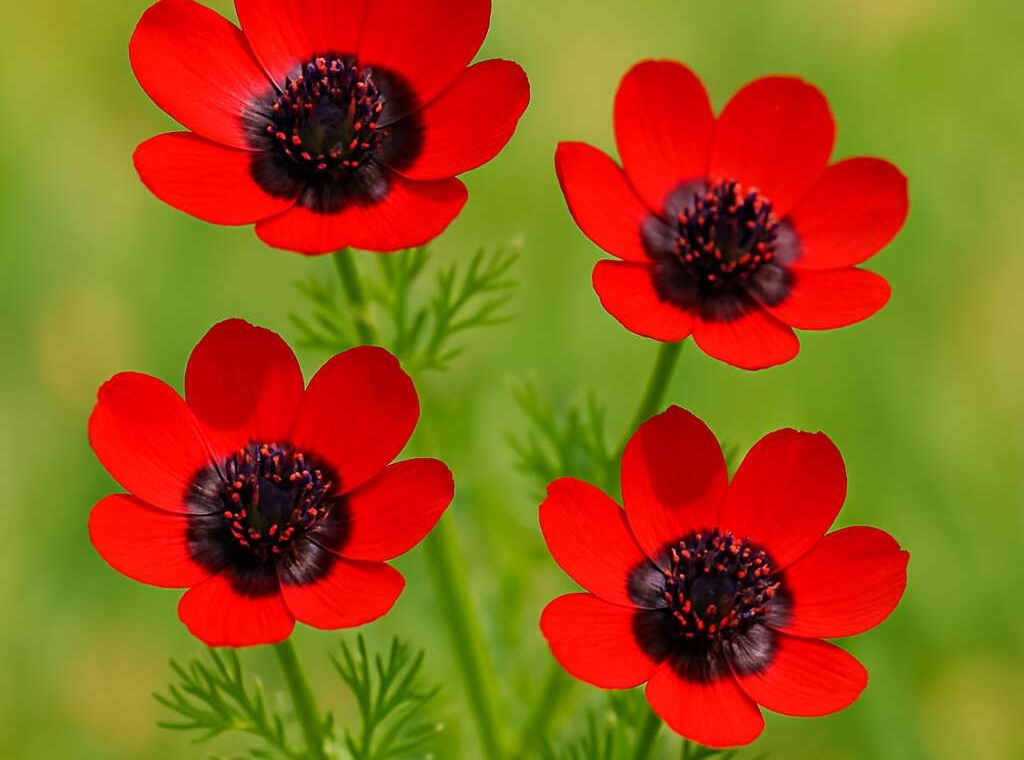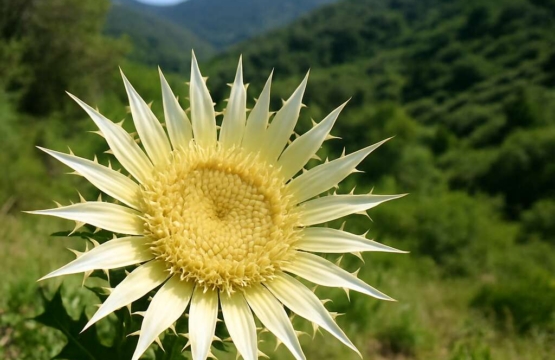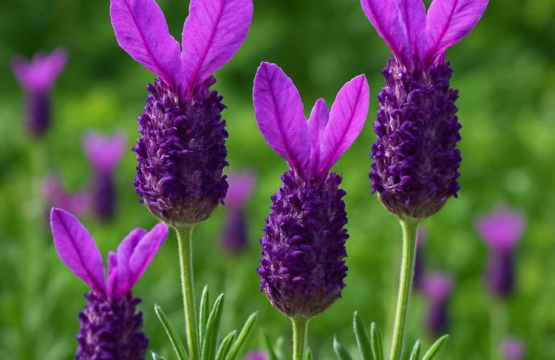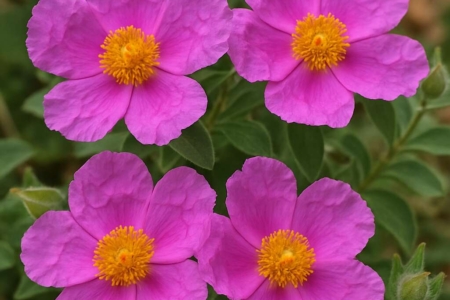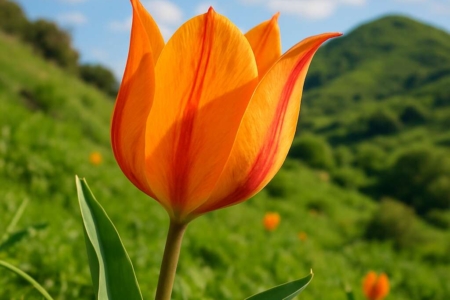Understanding the Pheasant’s Eye (Adonis annua)
What is Adonis annua? – Overview of Pheasant’s Eye, its scientific classification, and botanical description
Among the most captivating wildflowers, Pheasant’s Eye (Adonis annua) commands attention with its delicate beauty and intriguing history. This species belongs to the Ranunculaceae family, known for its vibrant blooms and resilience in diverse habitats. Adonis annua, with its fleeting yet striking appearance, has fascinated botanists and enthusiasts alike for centuries.
Botanically, Pheasant’s Eye is characterised by its slender stems and vivid red petals, often adorned with contrasting centre markings that mimic the flickering plumage of a pheasant’s tail—hence the evocative name. Its botanical description reveals a plant that stands about 20 to 50 centimetres tall, with finely divided leaves that add a delicate texture to its overall silhouette.
- Bright red petals with a central black or yellow eye
- Thorny, finely divided foliage
- Seasonal bloom from early spring to late summer
While it may seem like a fragile flower, Adonis annua possesses a resilient nature, thriving in rocky terrains and open fields. Its scientific classification places it firmly within the genus Adonis, a name derived from Greek mythology—adding an element of mystique to its botanical allure. This combination of visual appeal and historical resonance makes Pheasant’s Eye a truly extraordinary subject in the world of wildflowers.
Key Characteristics – Distinctive features, flower color, size, and blooming season
Pheasant’s Eye (Adonis annua) is a striking wildflower that captures attention with its vivid colours and distinctive features. Its bright red petals are often the first thing noticed, contrasting sharply with the dark central markings that resemble a pheasant’s tail—making it truly eye-catching. The plant typically reaches a height of 20 to 50 centimetres, giving it a delicate yet resilient presence in the wild.
Its seasonal bloom spans from early spring to late summer, offering a fleeting but spectacular display. The flowers are characterised by their vibrant petals and a central eye that can be black or yellow, depending on the specimen. The finely divided, thorny foliage adds to its textured appearance and helps it withstand rocky terrains and open fields where it often thrives.
- Bright red petals with contrasting black or yellow centres
- Delicate, finely divided foliage with thorn-like structures
- Seasonal bloom from early spring through late summer
Understanding the key features of Pheasant’s Eye (Adonis annua) reveals its unique blend of beauty and resilience. Despite its delicate appearance, this wildflower is a hardy survivor, making it a captivating subject for botanists and wildflower enthusiasts alike.
Habitat and Distribution – Typical growing regions, soil preferences, and environmental conditions
Among the myriad wildflowers that adorn the European landscape, Pheasant’s Eye (Adonis annua) stands out as a symbol of fleeting beauty and resilient endurance. Its habitat is as diverse as its vivid petals, thriving in environments where few other flora dare to flourish. This hardy annual prefers well-drained, calcareous soils, often found in rocky outcrops, open fields, and grasslands where the sun’s rays penetrate unimpeded. Such conditions seem almost tailor-made for its delicate yet tenacious nature.
In its native range, which spans southern Europe, North Africa, and parts of the Middle East, Pheasant’s Eye is adapted to withstand the rigours of seasonal drought and temperature fluctuations. Its ability to flourish in these challenging environments is a testament to its evolutionary resilience. Interestingly, Pheasant’s Eye tends to prefer disturbed soils—areas where the earth has been recently tilled or exposed—allowing it to quickly establish itself amidst native vegetation.
- Calcareous soils rich in limestone or chalk
- Sun-drenched rocky slopes and open fields
- Temperate climates with seasonal rainfall and dry spells
This affinity for specific soil types and environmental conditions underscores why Pheasant’s Eye (Adonis annua) remains a captivating yet elusive presence in the wild. Its distribution pattern is a delicate dance of climate, soil, and disturbance—each element shaping its sporadic but spectacular appearances across the landscape. To encounter this wildflower is to witness nature’s paradox: a fragile beauty that endures where others falter, whispering stories of resilience amid adversity.
Historical and Cultural Significance – Medicinal uses, symbolism, and historical references
Throughout history, Pheasant’s Eye (Adonis annua) has woven itself into the tapestry of myth and medicine, its delicate blooms whispering stories of reverence and healing. In ancient Greece, the flower was associated with the goddess Aphrodite, symbolising love and beauty—an enduring testament to its captivating allure. Its vibrant petals have long inspired poets and artists, embodying fleeting splendour and resilience in adversity.
Traditional herbalists prized Pheasant’s Eye for its purported medicinal properties, particularly in the realm of heart health and circulatory support. Extracts derived from Adonis annua were once used to treat conditions such as angina and heart failure, although modern use is tempered by its potent toxicity. Despite this, the flower’s symbolism persists, often representing renewal, hope, and the transient nature of life.
In folklore, Pheasant’s Eye is sometimes regarded as a talisman of luck and protection, guarding against misfortune while reminding us of life’s ephemeral beauty. Its historical significance extends beyond medicine; the flower’s vivid, eye-catching appearance has cemented its status as a symbol of vitality and fleeting splendour—qualities that continue to enchant those who encounter its delicate presence in the wild.
Cultivation and Growing Tips
Planting Requirements – Soil type, sunlight needs, and watering guidelines
Few blooms evoke the delicate yet resilient spirit of Pheasant’s Eye, Adonis annua, which thrives in environments that mirror its fleeting but fervent existence. Cultivating this enchanting plant requires a keen understanding of its subtle needs; it prefers well-drained, sandy or loamy soil that allows its roots to breathe while preventing waterlogging, a critical factor for healthy growth. The plant’s love for sunlight is unwavering—full sun exposure is essential to coax out its vibrant, fiery blossoms that herald the arrival of spring.
Watering should be moderate, ensuring the soil remains moist but never waterlogged, particularly during the germination phase when the delicate seedlings are most vulnerable. For optimal growth, consider the following planting requirements:
- Choose a site with unfiltered, direct sunlight for at least six hours daily.
- Ensure the soil is enriched with organic matter to emulate its natural habitat.
- Maintain consistent moisture levels, avoiding both drought and excess water.
Adonis annua’s growth cycle is fleeting, but with careful attention to these cultivation tips, its presence can be a perennial source of wonder in garden borders or wildflower meadows, where its vibrant blooms seem to ignite fleeting moments of beauty amidst the ephemeral chaos of nature.
Propagation Methods – Seeds, cuttings, and best practices for successful growth
Propagating Pheasant’s Eye (Adonis annua) offers a captivating challenge that rewards gardeners with vibrant bursts of colour each spring. The most common method is from seed, which requires patience but yields stunning results. To ensure successful germination, sow the seeds directly into well-prepared soil in early spring, pressing them lightly to make contact with the ground, as they need light to germinate. Keep the soil consistently moist but not waterlogged, mimicking the plant’s natural environment.
For those seeking quicker blooms, cuttings can be taken during the plant’s dormant period. Softwood cuttings in early summer tend to root best when placed in a mixture of sand and organic matter, ensuring good drainage and aeration. It’s vital to keep cuttings in a shaded spot and maintain steady moisture until roots develop.
- Start seeds indoors in early spring for early blooms.
- Use a well-draining, organic-rich soil to emulate natural habitat conditions.
- Maintain consistent moisture levels, especially during germination and early growth stages.
- Consider softwood cuttings for quicker propagation, especially in late spring or early summer.
Patience and attention to detail turn the fleeting beauty of Pheasant’s Eye into a perennial spectacle. Whether propagated from seed or cuttings, the delicate yet resilient nature of Adonis annua makes it a treasured addition to wildflower meadows or garden borders, igniting a fleeting moment of natural splendour.
Care and Maintenance – Fertilization, pruning, and pest control tips
Cultivating Pheasant’s Eye (Adonis annua) is a delicate art that rewards with fleeting yet spectacular displays of colour. To maintain its vibrancy, proper care and maintenance are paramount. Fertilising sparingly with a balanced, organic fertiliser in early spring encourages healthy growth without overwhelming the plant’s natural charm. Over-application can lead to excessive foliage at the expense of blossoms, so moderation is key.
Pruning should be gentle; remove spent flowers to promote a tidy appearance and possibly encourage a second flush of blooms. Pest control for Pheasant’s Eye is generally straightforward—watch for aphids and snails, which can be deterred with natural remedies or barrier methods. Interestingly, this resilient perennial benefits from a well-drained soil environment, as standing water can quickly cause root rot.
For optimal growth, consider the following:
- Maintain consistent watering, especially during dry spells, while avoiding waterlogged conditions.
- Apply a slow-release fertiliser once or twice per season.
- Remove dead or damaged stems to facilitate airflow and reduce disease risk.
This approach ensures that Adonis annua continues to enchant with minimal fuss, thriving in wildflower meadows or border plantings alike. Its fleeting bloom is a reminder that beauty, when nourished with care, can be both ephemeral and everlasting.
Growing Challenges – Common issues and how to overcome them
Growing Pheasant’s Eye (Adonis annua) is a delicate dance between patience and finesse. This charming perennial demands well-drained soil and plenty of sunlight, thriving best in full sun locations where its vibrant blooms can truly shine. One common challenge is overwatering, which can quickly turn the soil into a soggy mess, leading to root rot. To avoid this, ensure your planting site has excellent drainage and water only when the topsoil feels dry to the touch.
Another trick to keep Pheasant’s Eye happy is to be vigilant about pests such as aphids and snails. Natural remedies like neem oil or introducing beneficial insects often do the trick. When it comes to growth hurdles, inconsistent watering and poor soil drainage are top offenders—address these issues promptly to prevent the plant from faltering.
For those venturing into propagation, seed sowing during early spring or autumn is generally successful, but patience is key; germination can take several weeks. Remember, a little extra care and attention to these common issues will ensure your Adonis annua remains a spectacular yet manageable addition to your garden paradise.
Medicinal and Therapeutic Uses
Traditional Medicine – Historical uses in herbal remedies
Throughout history, the delicate yet potent Pheasant’s Eye, or Adonis annua, has woven itself into the tapestry of traditional medicine, revered for its supposed therapeutic virtues. Ancient herbal practitioners believed that extracts from this vibrant bloom held the power to invigorate the heart and soothe the restless mind. Its bright red petals, often seen as symbols of vitality, were used in folk remedies to treat a variety of ailments, from circulatory issues to minor respiratory discomforts.
In traditional healing practices, Adonis annua was sometimes prepared as a tincture or infused into ointments, believed to harness the plant’s natural potency. Its historical use extends beyond mere folklore—medieval herbalists documented its role in alleviating heart weakness and supporting overall vitality. Although modern science approaches these claims with caution, the legacy of Pheasant’s Eye remains etched in the annals of herbal medicine. For those exploring herbal remedies, understanding the plant’s traditional applications offers a fascinating glimpse into its revered status across cultures and centuries.
Active Compounds – Key phytochemicals and their benefits
Within the delicate petals of Pheasant’s Eye, or Adonis annua, lies a treasury of potent phytochemicals that have captivated herbalists for centuries. These active compounds are responsible for the plant’s renowned medicinal and therapeutic properties, echoing the ancient belief in its vitality-enhancing virtues. Among these, cardiac glycosides stand out as the most celebrated—complex molecules that influence heart function with a gentle yet profound touch. These compounds are thought to stimulate cardiac muscles, supporting circulation and offering a natural remedy for heart-related ailments.
In addition to glycosides, Adonis annua contains flavonoids and saponins—powerful antioxidants known to combat oxidative stress and promote overall well-being. Flavonoids, in particular, have antioxidant properties that protect cells from damage, while saponins may bolster immune responses and reduce inflammation. The synergy of these phytochemicals underpins the plant’s traditional use as a remedy for circulatory issues and fatigue.
Furthermore, the plant’s vibrant red hue is not merely aesthetic; it signifies the presence of these potent compounds. For those seeking natural support for heart health, Pheasant’s Eye remains a botanical treasure trove. Its unique phytochemicals continue to inspire scientific exploration, bridging the ancient wisdom of herbal lore with modern medicinal insights.
Modern Research – Latest scientific studies and findings
Recent scientific studies have shed new light on the remarkable medicinal and therapeutic uses of Pheasant’s Eye, or Adonis annua. Modern research confirms that the plant’s active compounds, particularly cardiac glycosides, hold significant potential in supporting heart health. These naturally occurring substances work by gently enhancing cardiac muscle function, thereby improving circulation and alleviating symptoms associated with heart failure.
In addition to these well-known compounds, ongoing studies highlight the antioxidant properties of flavonoids and saponins within Adonis annua. These phytochemicals are believed to combat oxidative stress, reduce inflammation, and bolster immune responses. Such findings align with traditional uses, yet they also open doors to innovative approaches in herbal medicine. The latest research continues to validate Pheasant’s Eye as a promising candidate for integrative therapies, bridging ancient herbal wisdom with cutting-edge science.
Precautions and Safety – Toxicity warnings, dosage guidelines, and contraindications
While Pheasant’s Eye, or Adonis annua, offers promising medicinal benefits, it is vital to approach its use with caution. The plant contains potent cardiac glycosides that, in excessive amounts, can lead to toxicity. Overdose may cause severe symptoms such as nausea, dizziness, irregular heartbeat, or even more critical cardiac issues. Therefore, proper dosage guidelines are essential to prevent adverse effects.
For safe utilisation, it is recommended that only standardised extracts or preparations recommended by qualified herbalists are used. Typically, dosages vary based on the preparation form and individual health status. As a rule of thumb, avoid self-medicating with Pheasant’s Eye—its potency demands respect and professional guidance. Moreover, certain groups should exercise extra caution.
People with heart conditions, pregnant or breastfeeding women, and individuals on specific medications—especially those affecting the heart—should avoid using Adonis annua altogether. Contraindications are serious; interactions with medications like digoxin can be dangerously unpredictable. For those considering its use, consulting a healthcare professional is an absolute necessity to determine safety and appropriate dosing.
- Always adhere to recommended dosages to prevent toxicity.
- Never combine Pheasant’s Eye with other cardiac medications without medical advice.
- Be alert for signs of adverse reactions, such as nausea, visual disturbances, or irregular heartbeat.
In summary, while Pheasant’s Eye, or Adonis annua, boasts remarkable therapeutic potential, its safety profile hinges on responsible use. Understanding the plant’s potent properties and respecting its limits is crucial to harnessing its benefits without risking health. This plant’s delicate balance between healing and harm underscores the importance of expert supervision at every step.
Gardening and Landscaping with Pheasant’s Eye
Design Ideas – Incorporating into garden beds, borders, and container gardens
In the shadowy realm of garden design, few plants evoke the haunting beauty of Pheasant’s Eye Adonis annua. Its delicate, crimson petals seem to whisper secrets of ancient lore, drawing the eye with a fleeting, almost ethereal glow. When integrated into garden beds or borders, this perennial transforms the landscape into a tableau of poetic darkness, where vibrant blooms punctuate the gloom like fiery embers. Its resilience in well-drained, sun-drenched soils makes it an ideal choice for those seeking to create a striking contrast against lush greenery or hardy foliage.
For those craving a touch of the macabre in their outdoor sanctuary, incorporating Pheasant’s Eye Adonis annua into container gardens offers a versatile avenue. Imagine darkened terracotta pots cradling these fiery blooms, their presence haunting yet beautiful. To enhance visual impact, consider grouping several plants in a single container or planting amidst silvery foliage to amplify their vivid colour and delicate structure. With its fleeting bloom, this plant invites a fleeting moment of wonder—a reminder that beauty often resides in the transient and mysterious.
Seasonal Blooms – Using Pheasant’s Eye for year-round interest
Gardening and landscaping with Pheasant’s Eye Adonis annua offers a captivating avenue for achieving year-round visual interest. Its fleeting, fiery blooms provide a striking spectacle in spring and early summer, but what makes this plant truly remarkable is its adaptability across seasons. When strategically integrated into garden beds or borders, Pheasant’s Eye Adonis annua can serve as both a focal point and a complementary accent, enhancing the overall aesthetic with its delicate, crimson petals.
In the cooler months, the plant’s hardy foliage persists, offering contrast against evergreen shrubs and sculpted hedges. To maximise its seasonal impact, consider pairing Pheasant’s Eye Adonis annua with silvery or dark-leaved plants—such as Artemisia or black mondo grass—to create a tapestry of colour and texture. For those seeking continuous allure, including this plant in mixed borders or even in container gardens allows for flexible design and easy seasonal adjustments.
A simple yet effective approach involves grouping several specimens together; this not only amplifies its fiery display but also invites passersby to pause in admiration. The transient nature of Pheasant’s Eye Adonis annua blooms reminds us that beauty often resides in moments of impermanence, making it an ideal choice for those who appreciate the poetic fragility of nature’s fleeting wonders.
Companion Planting – Optimal plant combinations for aesthetics and health
In the intricate dance of garden design, selecting the right companion plants can elevate the visual symphony to sublime heights. Pheasant’s Eye Adonis annua, with its fiery blooms and delicate foliage, pairs beautifully with plants that enhance its fleeting splendour. Incorporating the right plant combinations not only amplifies aesthetic appeal but also promotes plant health and resilience.
For a striking contrast, consider pairing Pheasant’s Eye Adonis annua with silvery-leaved plants such as Artemisia or succulents, which lend a cool backdrop to its crimson petals. Dark-leaved varieties like black mondo grass or purple heuchera create a dramatic tableau, making the fiery blooms truly pop. These combinations also foster a favourable microclimate, reducing competition and encouraging robust growth.
- Use complementary textures: soft, feathery foliage against the crisp, vibrant blooms.
- Mix heights: position taller plants behind Pheasant’s Eye Adonis annua to craft a layered, garden theatre.
- Incorporate evergreen shrubs: they provide year-round contrast, highlighting the ephemeral beauty of the Pheasant’s Eye blooms.
Moreover, interplanting with herbs like lavender or sage can attract beneficial insects while adding fragrant charm. In container gardens, grouping several Pheasant’s Eye Adonis annua specimens with plants of varying textures and colours creates a dynamic display that evolves with the seasons, ensuring year-round interest and a touch of poetic impermanence in your outdoor sanctuary.
Maintenance Tips – Ensuring vibrant blooms and healthy growth
Gardening with Pheasant’s Eye Adonis annua is a captivating journey into the world of botanical splendour. To ensure vibrant blooms and healthy growth, attentive maintenance is essential. This delicate annual thrives in well-drained soil and appreciates a sunny position, where its fiery blooms can truly shine. Regular watering during dry spells keeps the foliage fresh, but overwatering can lead to root rot, so moderation is key.
Implementing a thoughtful fertilisation routine, such as a balanced liquid feed during active growth, can significantly boost flowering performance. Additionally, gentle pruning after the bloom season encourages a tidy appearance and promotes vigorous reblooming. Pheasant’s Eye Adonis annua benefits from protection against pests like aphids and snails, which can be deterred through organic methods or natural repellents.
For a seamless integration into your garden design, consider pairing Pheasant’s Eye with contrasting textures and colours. An effective approach is to combine it with silvery-leaved plants or dark foliage varieties—these not only accentuate its vibrant crimson petals but also foster a microclimate that supports robust growth. Incorporating these elements creates a dynamic and resilient garden display, celebrating the fleeting beauty of Pheasant’s Eye Adonis annua in every season.
Harvesting and Conservation
When and How to Harvest – Timing and techniques for medicinal or ornamental use
Harvesting Pheasant’s Eye (Adonis annua) is as much an art as it is a science, and timing is everything. This delicate plant bursts into vibrant bloom in early spring or late autumn, depending on the climate. The key is to pick the right moment when the flowers are fully open but before the petals start to fade—think of it as catching a fleeting masterpiece in its prime. For medicinal or ornamental use, harvesting should be done carefully to preserve the plant’s integrity and ensure sustainability.
When it comes to techniques, the ideal approach involves snipping the flower stems just above the base with sterilised scissors or pruning shears. This minimises damage and encourages healthy regrowth. For herbal preparations, focus on collecting the flower heads and fresh leaves, which contain the highest concentration of active compounds. Remember, overharvesting can threaten local populations, so responsible collection is paramount. Some enthusiasts even follow a simple
- selective harvesting
- seasonal timing
- minimal disturbance
strategy to help conserve this beautiful yet potentially vulnerable plant species.
Preservation Methods – Drying, storing, and maximizing shelf life
Effective harvesting and conservation of Pheasant’s Eye (Adonis annua) hinge on meticulous techniques that respect the plant’s delicate nature. Proper drying and storage are crucial to maintaining its potency and ensuring sustainability. Once you’ve harvested the vibrant flower heads and fresh leaves at their peak, the next step is to preserve their active compounds. Air-drying in a well-ventilated, dark space prevents degradation of essential phytochemicals, while avoiding direct sunlight keeps the vibrant colours intact.
Maximising shelf life involves storing dried Pheasant’s Eye in airtight containers, away from moisture and light. This prevents mould growth and preserves bioactive constituents for herbal preparations or ornamental displays. For added protection, some herbalists recommend vacuum-sealing dried material, which extends freshness and keeps the plant’s medicinal properties intact. To streamline the process, consider these steps:
- Gather flower heads and leaves at full bloom, ensuring minimal disturbance to the plant.
- Gently spread the plant material on a mesh rack or hanging bunches in a cool, dry environment.
- Periodically check for signs of mould or excessive moisture.
- Once thoroughly dried, label and store in dark glass jars or airtight containers for long-term use.
By adhering to these conservation methods, enthusiasts can enjoy the beauty and benefits of Pheasant’s Eye (Adonis annua) year-round while respecting its ecological importance. Responsible harvesting, combined with careful preservation, ensures this stunning plant remains a treasured component of both herbal medicine and ornamental gardens.
Sustainable Harvesting – Environmental impact and responsible collection practices
In an era increasingly conscious of ecological footprints, the sustainable harvesting of Pheasant’s Eye (Adonis annua) emerges as a critical endeavour. This delicate wildflower, celebrated for its vibrant blooms and medicinal virtues, demands a respectful approach to collection—one that honours both nature and tradition. Responsible harvesting not only safeguards the plant’s longevity but also ensures that future generations can appreciate its splendour and benefits.
Environmental impact minimisation is central to ethical collection practices. Enthusiasts should avoid over-harvesting, ensuring only a portion of the plant is gathered to allow natural regeneration. This approach helps maintain the ecological balance within its native habitat, which spans regions with well-drained soils and specific sunlight requirements. To further this effort, many herbalists advocate a simple yet effective protocol, such as:
- Harvesting during the plant’s peak bloom to minimise disturbance to the root system.
- Utilising selective picking techniques that leave the majority of the population undisturbed.
- Implementing rotation harvesting to prevent depletion in any single area.
In the pursuit of conservation, mindful collection practices are paramount. They foster a symbiosis between human appreciation and environmental stewardship, ensuring that Pheasant’s Eye (Adonis annua) remains a treasured yet sustainable feature of both herbal medicine and ornamental gardens. Responsible harvesting is not merely an act of collection but a testament to our commitment to preserving nature’s delicate tapestry for years to come.
Legal Aspects – Regulations, permits, and ethical considerations
Amid the delicate dance of nature’s grandeur, the harvesting of Pheasant’s Eye (Adonis annua) demands more than mere intent; it calls for reverence and restraint. With increasing global interest in herbal medicine and ornamental horticulture, understanding the legal framework surrounding this captivating wildflower becomes paramount. Regulations and permits serve as the invisible guardians of its fragile existence, ensuring that our admiration does not unwittingly morph into exploitation.
In many regions, the collection of Pheasant’s Eye (Adonis annua) is subject to strict legislation designed to preserve native populations. Before embarking on any harvest, enthusiasts must navigate local conservation laws, which often require obtaining permits or licences. These legal considerations are not mere bureaucratic hurdles but vital safeguards, a testament to our collective duty to protect this botanical treasure. It’s a reminder that responsible collection is as much about respecting nature as it is about appreciating its splendour.
Ethical considerations extend beyond legality; they encompass the moral obligation to minimise environmental impact. Selective picking—harvesting only a few blooms per plant—ensures natural regeneration persists, allowing future generations to marvel at Pheasant’s Eye’s fiery splendour. By adhering to these principles, collectors foster a harmonious relationship with the environment, demonstrating that stewardship and admiration can flourish side by side.
To streamline sustainable practices, some practitioners employ a
- rotation harvesting
- strict seasonal timing
- minimal disturbance techniques
that align with conservation goals. These measures serve as a testament to our commitment to safeguarding Adonis annua—a botanical jewel woven into the fabric of ecological and cultural history. Such conscientious collection practices are not mere acts of compliance but a profound declaration of respect and responsibility toward the natural world and its ongoing legacy.
